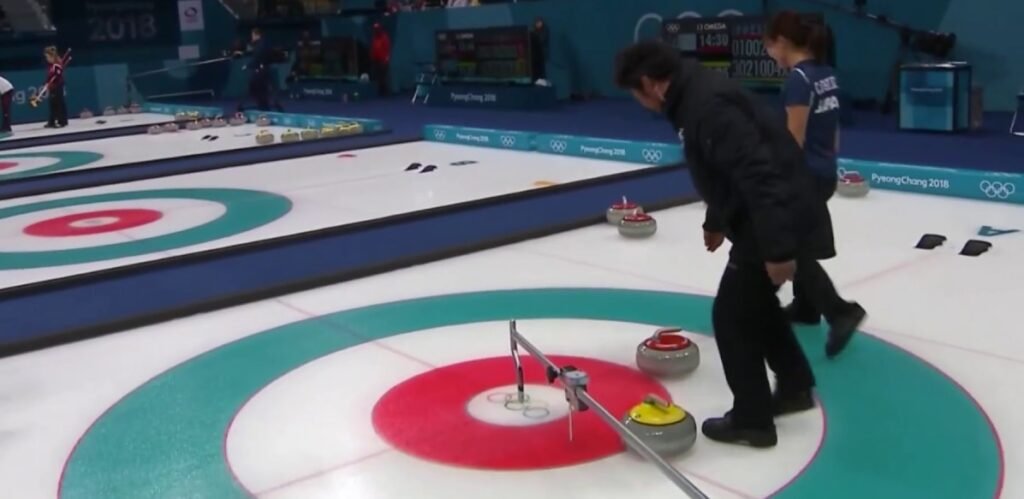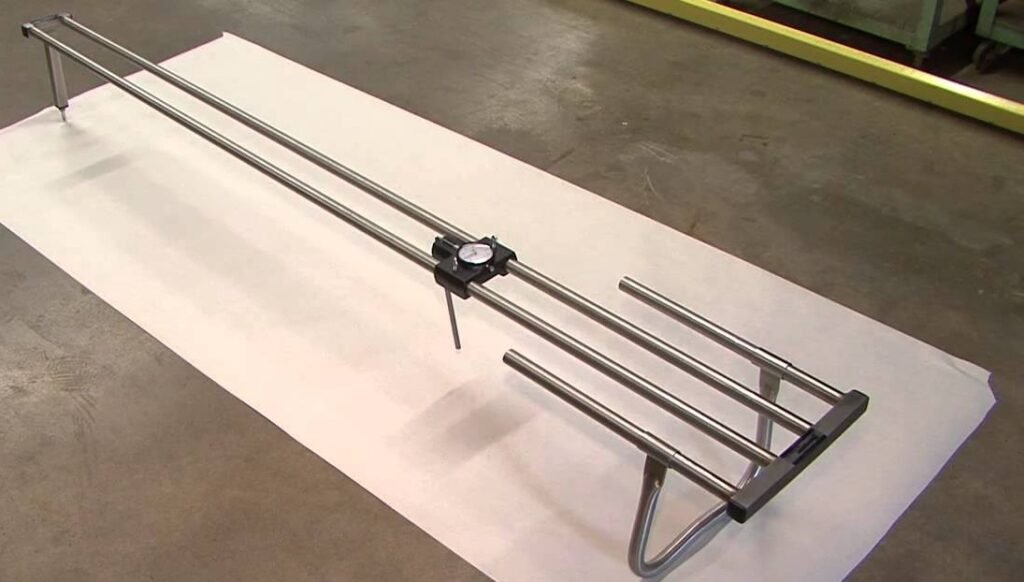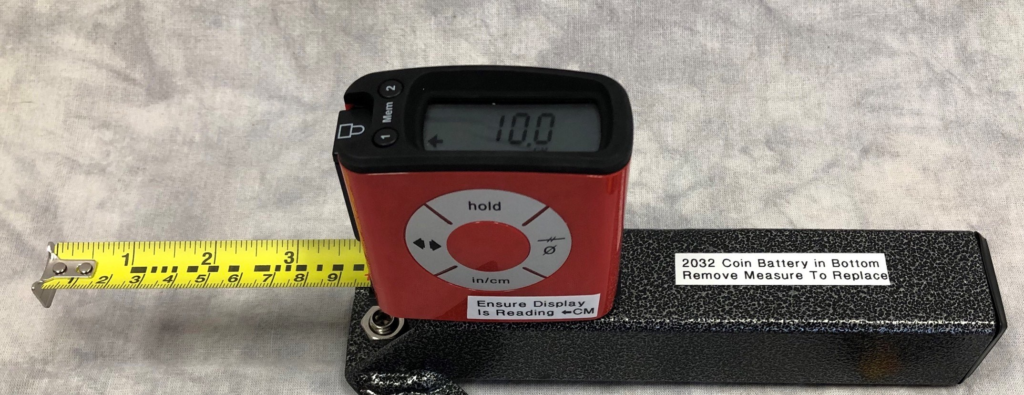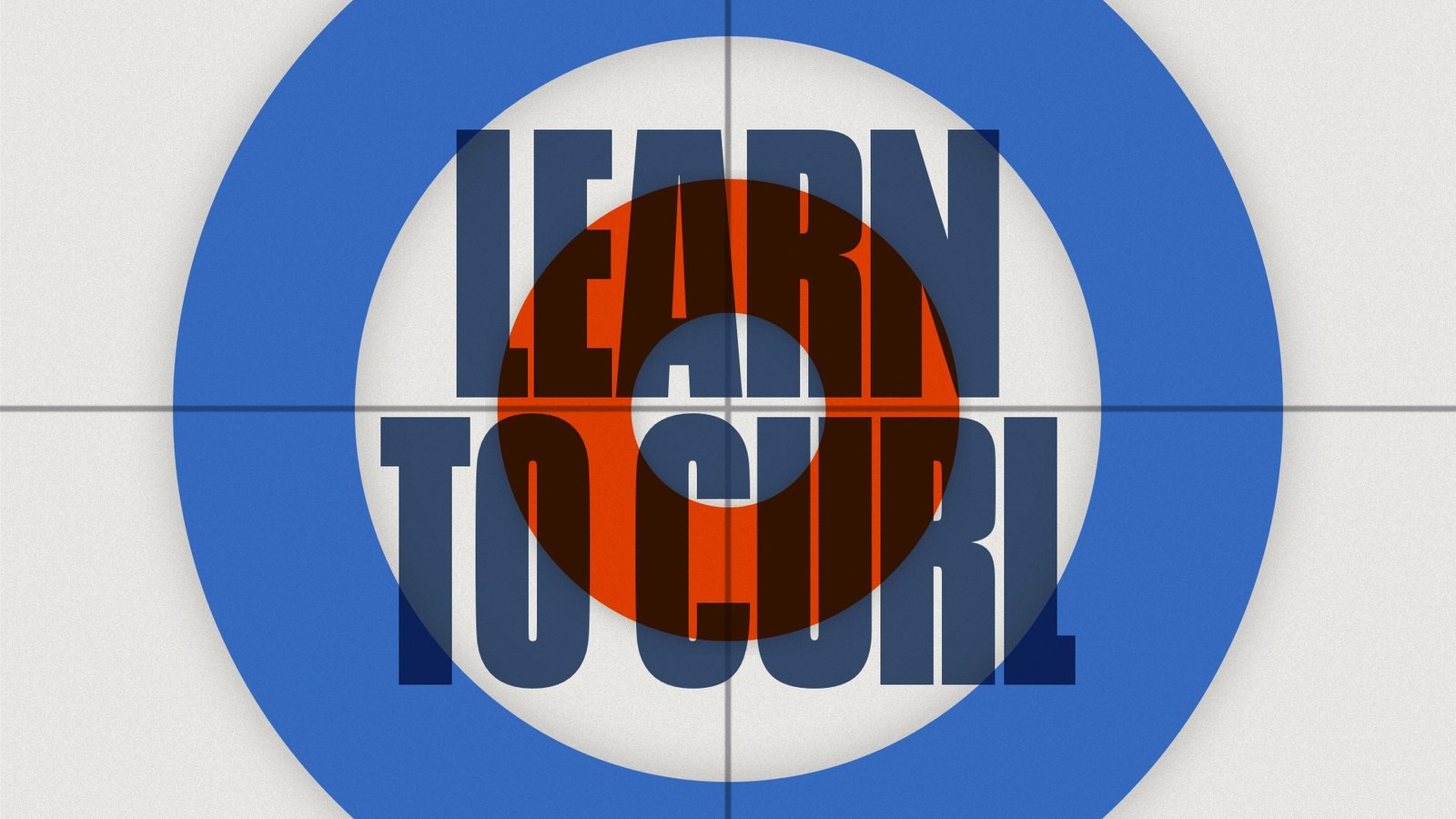Rather than a game of inches, curling is a game of millimetres! Despite the best efforts of everyone involved, sometimes it is difficult to tell which stone is closer to the pin at the centre of the button. To help in these situations, curlers call for a “measure” . This can only be called for after all of the stones have been thrown in an end, when the vice-skips are trying to agree the score. In major championships the measuring will be done by an umpire, but in most club curling players will take care of this procedure themselves.

The measuring device consists of a point which is placed in the pin (a small hole at the centre of the button) and a moveable dial. The measure is moved to the edge of one stone and the dial is read, before the measure is turned around the house to compare dial readings with any other stones. With the help of this handy tool, it should become clear to both teams which stone is closest, and the score will be agreed.
If there is still a dispute about which stone is closer, players may measure again to check the procedure was done correctly. If the players or an umpire can’t separate two stones using a measure, then they both cancel each other out and neither score. However, this is an incredibly rare occurrence!

While the measure shown above is the most frequently used, there is also another measuring device called the “12 foot measure”. This can be used earlier in an end if players aren’t sure whether or not a stone is in the house. Due to the Free Guard Zone, players will need to know that a stone is in the house if they want to take it out, as if it is a guard it cannot be removed until the sixth stone of the end is thrown.
Finally, a third measuring device is used if there is a pre-game Last Stone Draw competition for hammer and DSC. During this process, players throw a shot into the house and try and get as close to the pin as they can. These shots are then measured using a device similar to the one shown below, with the distance from the pin recorded before the stone is moved out of the way for the next attempt.

Each of these 3 tools are essential bits of equipment for any curling rink, as they could each be needed multiple times during bonspiels. Sometimes you may even see multiple devices being used on multiple sheets at the same time. Curling certainly is a sport where the outcome of a measure often means the difference between winning and losing.
For more on curling terminology, visit our glossary page!
Hopefully you might like to come and give curling a try.
For a one-off session, visit our Try Curling page to book a two hour session for yourself, or bring friends and family.
Alternatively, you could book a place on one of our Learn To Curl courses which run over a series of 4 weekly two hour sessions.


